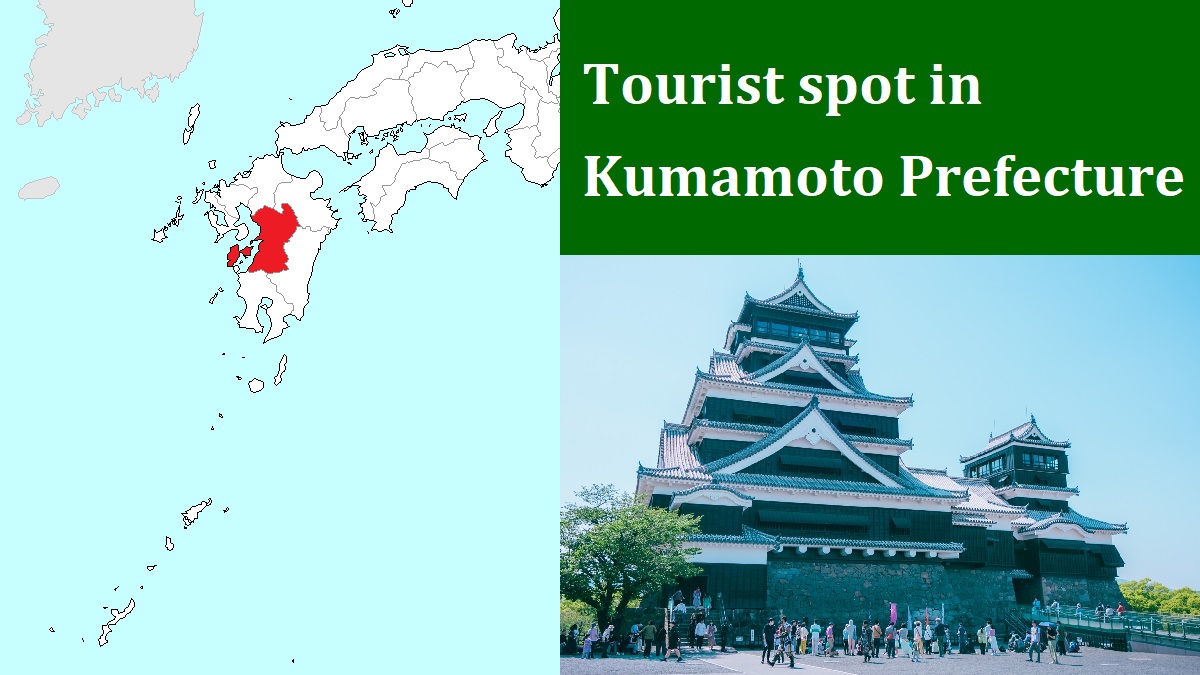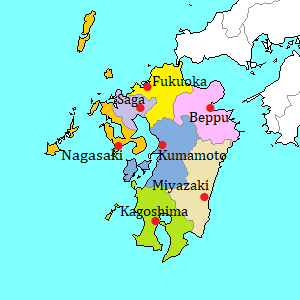Amakusa islands [天草]
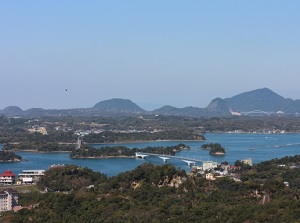
Amakusa Matsushima
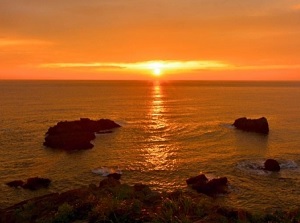
Sunset in Amakusa
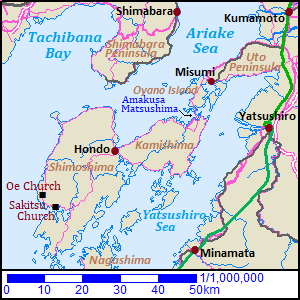
Amakusa is a group of islands near the southwest coast of Kumamoto Prefecture.
Relatively-large three islands and the mainland surround Yatsushiro Sea, and many other small islands are around there.
Uto Peninsula in Kumamoto Prefecture and Shimabara Peninsula in Nagasaki Prefecture are close to this islands.
The large three islands are Kamishima (上島), Shimoshima (下島) and Nagashima (長島) from the north.
There is a narrow channel like a canal between Kamishima and Shimoshima, there is a narrow channel like a canal.
It is about 3 km long and only about 100 meters wide.
Uto Peninsula, Kamishima and Shimoshima are connected with national roads.
Especially, the section from Misumi town at the tip of Uto Peninsula through Ooyano Island to Kamishima is called Amakusa Pearl Line.
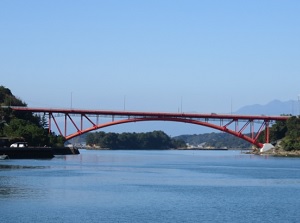
The 5th bridge of Amakusa Gokyo
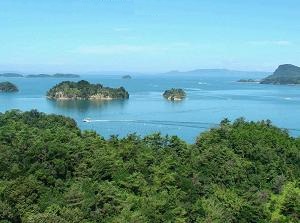
Amakusa Matsushima
It has five bridges across the sea, and they are called Amakusa Gokyo (天草五橋, Five Bridges of Amakusa).
There are four bridges of them are between Ôyano Island and Kamishima.
The section is within 3 km long, and there are many small island in this channel.
The beautiful scenery is similar to Matsushima in Miyagi Prefecture.
So, it is called Amakusa Matsushima (天草松島).
There is the observatory on the hill at the tip of Kamishima near the 5th bridge.
And the pleasure boat touring around the islands leaves from the port near the observatory.
(By route bus, get off at Yuransen-noriba stop.)
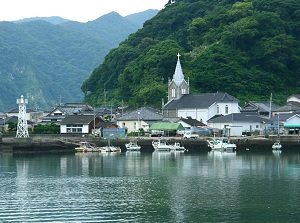
Sakitsu village in Shimoshima
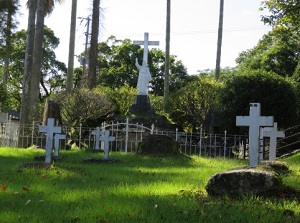
Tombs of the martyrs in Martyrdom Park

In 1549, Christianity was first introduced to Japan by Saint Francis Xavier, a Catholic missionary belonging to the Society of Jesus.
After that, eager missionary works were done based in Hirado and Nagasaki in Nagasaki Prefecture.
Christianity was also introduced in Shimoshima island in 1566, and it got many believers.
In the late 16th century, many churches and a seminary were built in Amakusa.
But Christianity was banned in 1587, and the lords around this area suppressed the Christians.
In the result, the people in Amakusa and Shimabara revolted against the tyranny of the lords in 1637.
But many of them were killed out at an old castle in Shimabara where they took refuge.
Since that, remaining Christians had hidden in Amaskusa until the lifting of the ban of Christianity in 1873.
Even now, about 30 percent of Amakusa people are Christians.
In Shimoshima, there are some spots relating to Christianity.
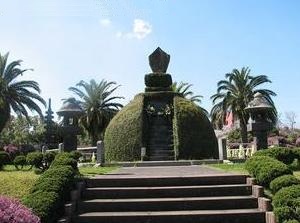
Monument in Martyrdom Park
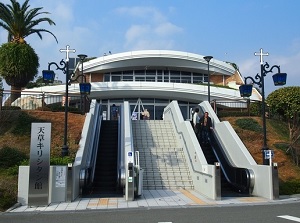
Amakusa Christian Museum
Hondo (本渡) is the central district in Shimoshima by the narrow channel between Kamishima and Shimoshima.
There is Shiroyama Park on a western hill of the district, and is also called Martyrdom Park ("Junkyô Kôen" in Japanese).
Originally, there was Hondo Castle built in 1530 in the place.
The lord was a Christian, but he and many Christians in Amakusa were killed by the government troops in 1589.
There are many tombs and monuments of the martyrs in the park.
And Amakusa Christian Museum (天草キリシタン館) interoduces above history of the Christians in Amakusa.
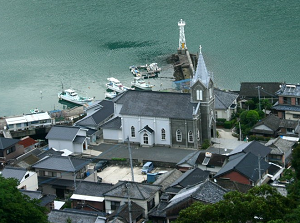
Sakitsu Catholic Church
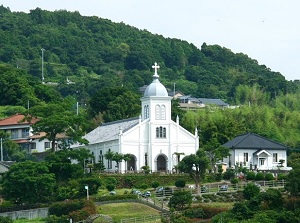
Oe Church
Sakitsu Catholic Church (崎津教会) is located about 35 km southwest of Hondo district.
It is a Gothic church and was built in 1934.
Sakitsu is a small fishing village, and the scenery with a noble church in the rustic Japanese fishing village is very unique.
The village has been designated as a World Heritage site.
Oe Church (大江天主堂, "Ôe Tenshudô" in Japanese) is located about 5 km northwest of Sakitsu Catholic Church.
It is a white Romanesque church built in 1933.
The holy spring at Lourdes is set up near the church, and there is Amakusa Rosario-kan which is a museum introducing the history of Christianity in Amakusa area.
How to get here
By route bus, from Kumamoto station, about 1 hour and 30 minutes to Yuransen-noriba stop, about 2 hours and 15 minutes to Hondo.
From Hondo, about 55 minutes to Kawaura-koukou stop.
Change to the bus, then about 23 minute to Kyoukai-iriguchi stop (Sakitsu Catholic Church), about 35 minutes to Tenshudou-iriguchi stop (Oe Church).

